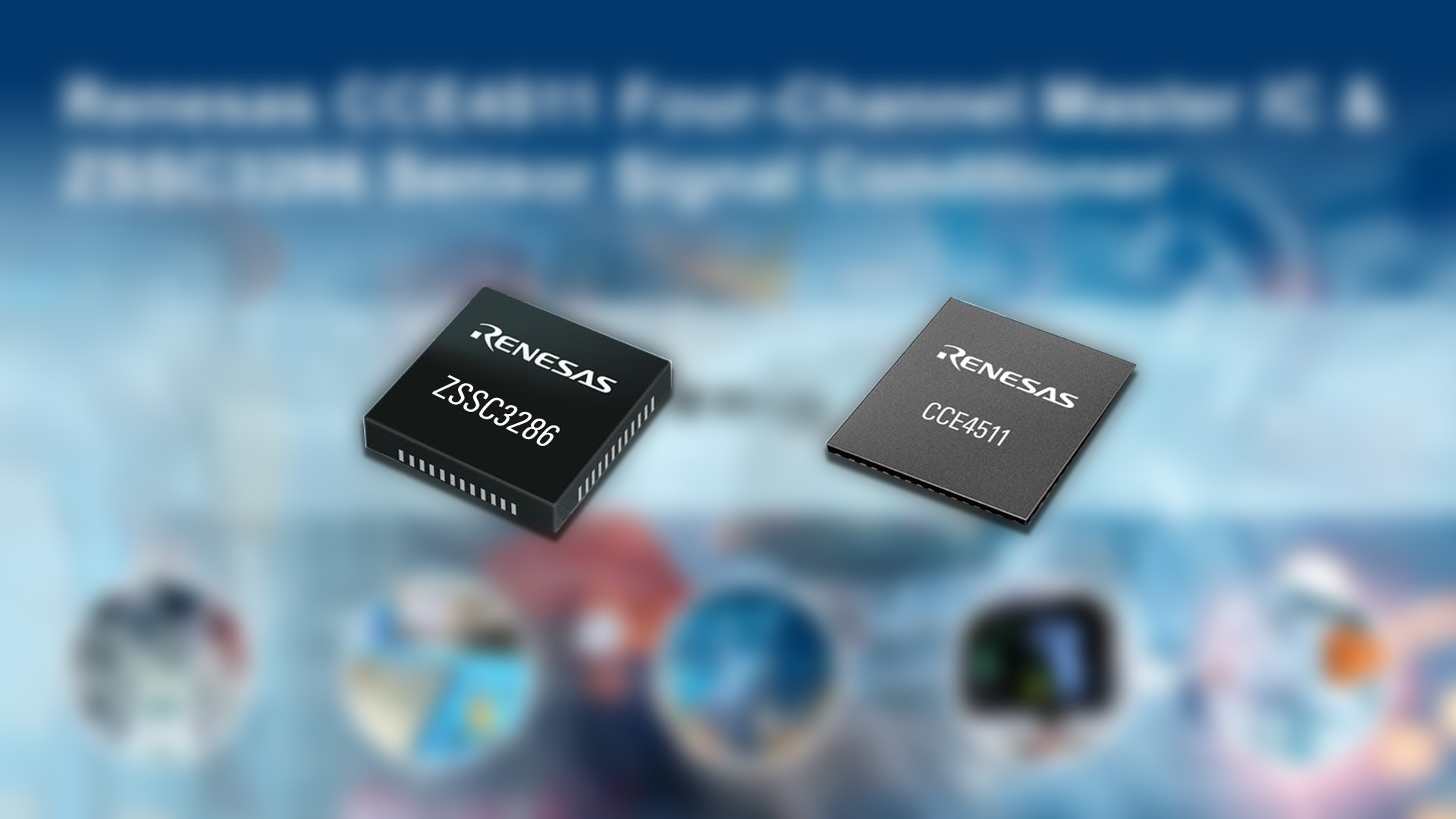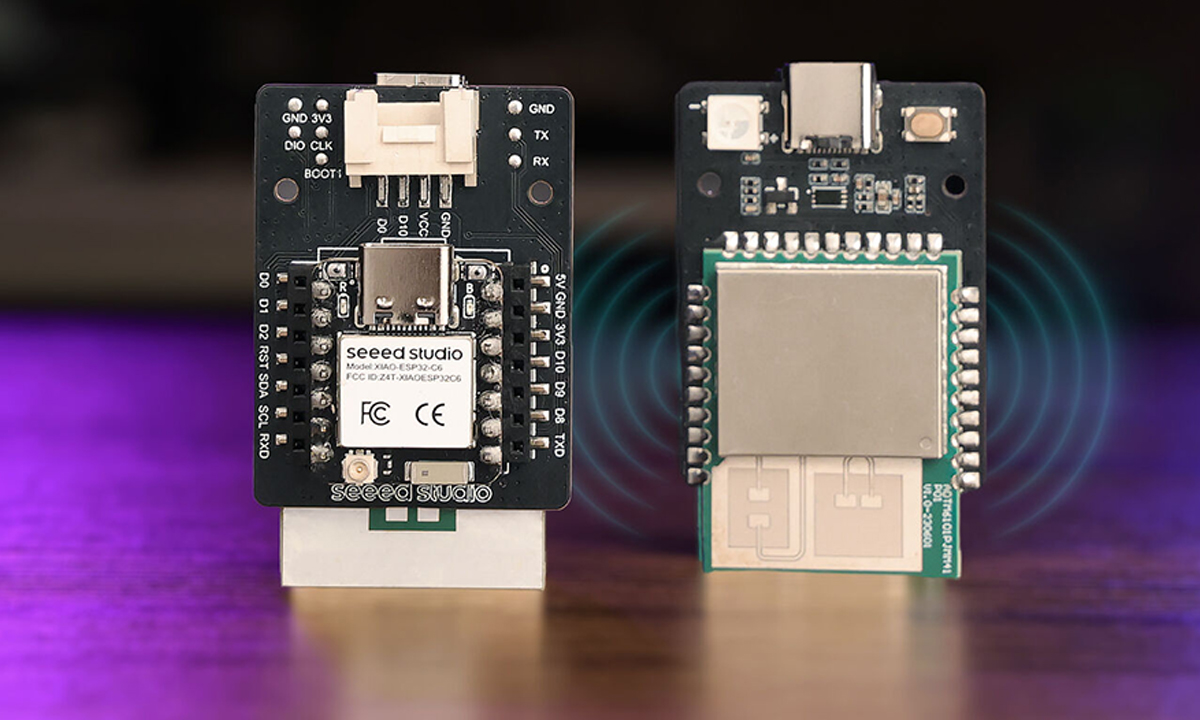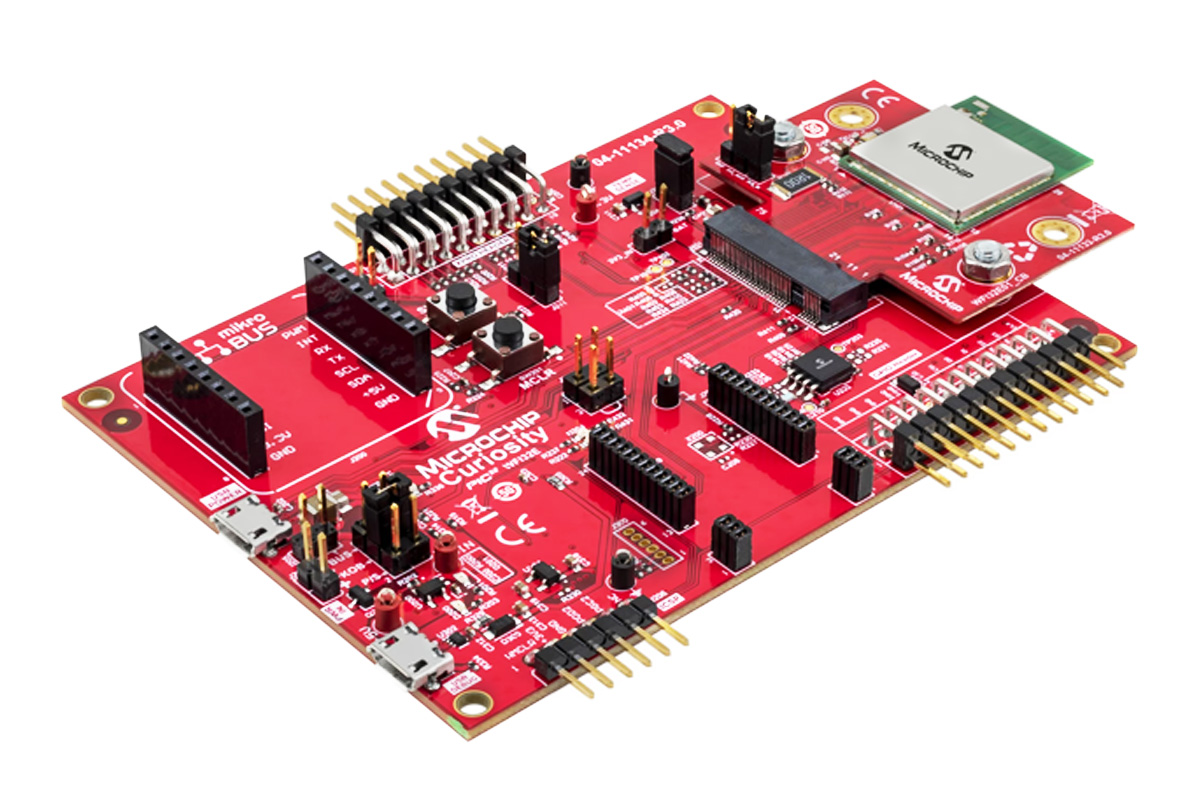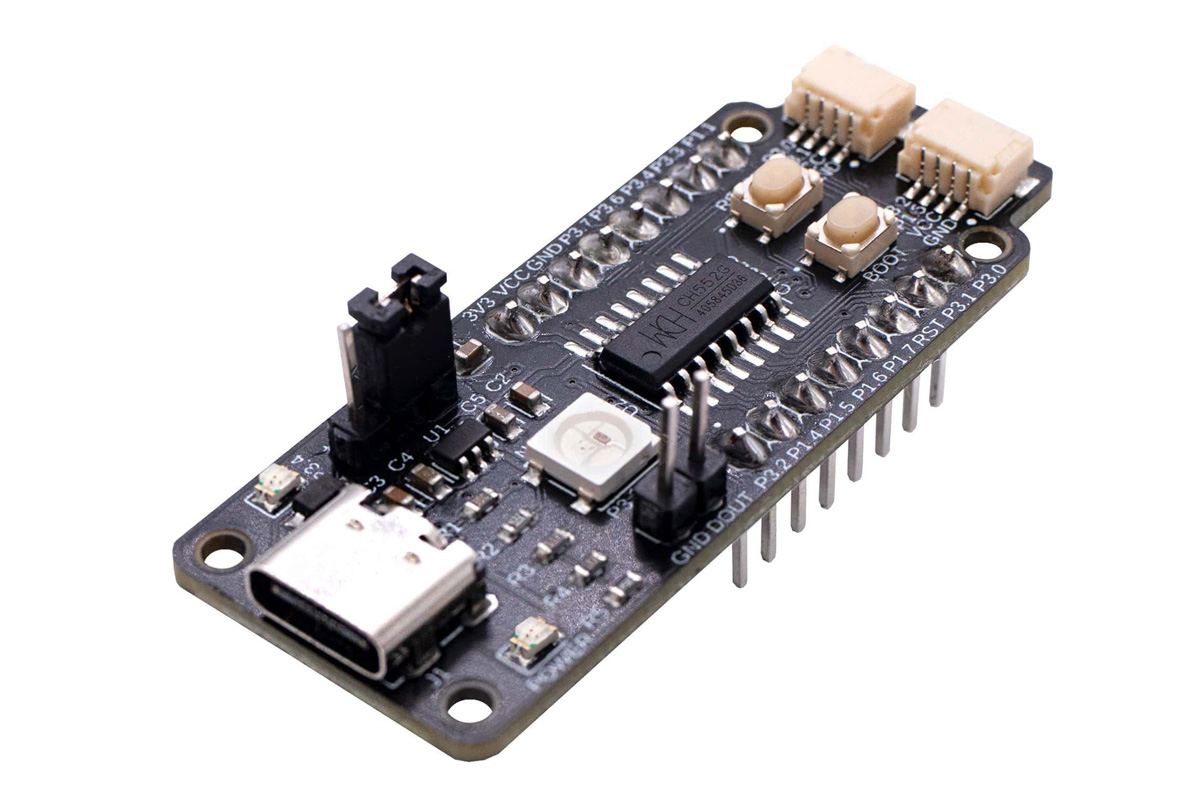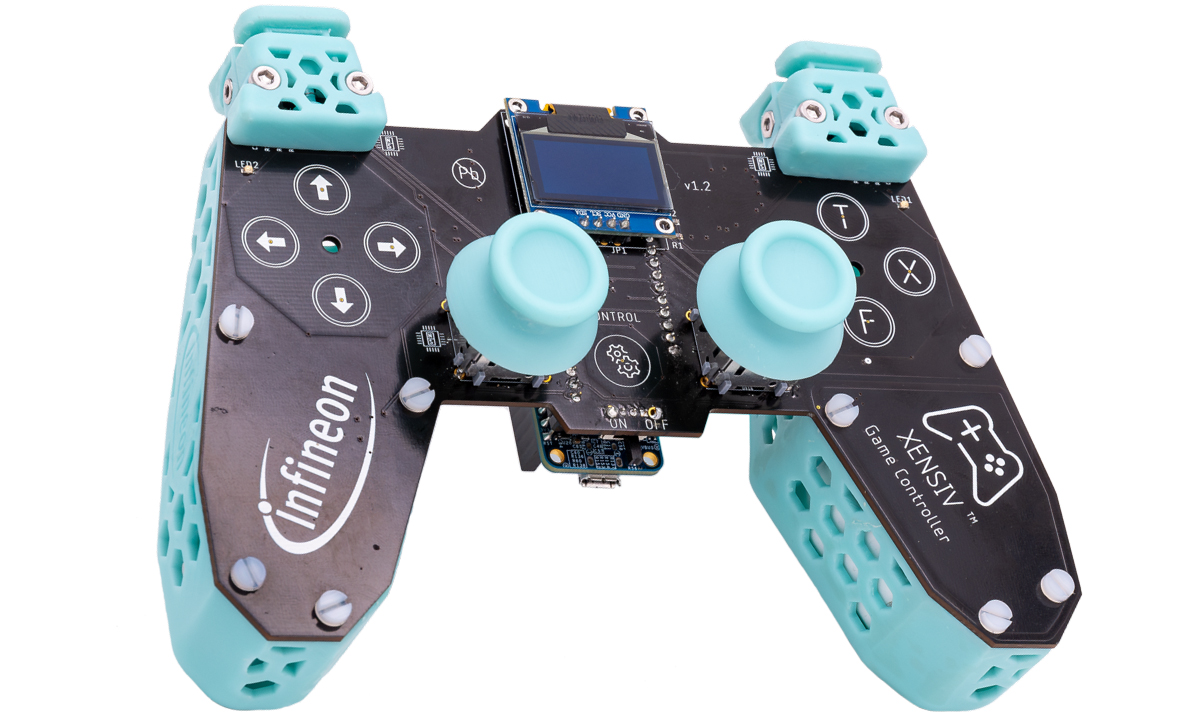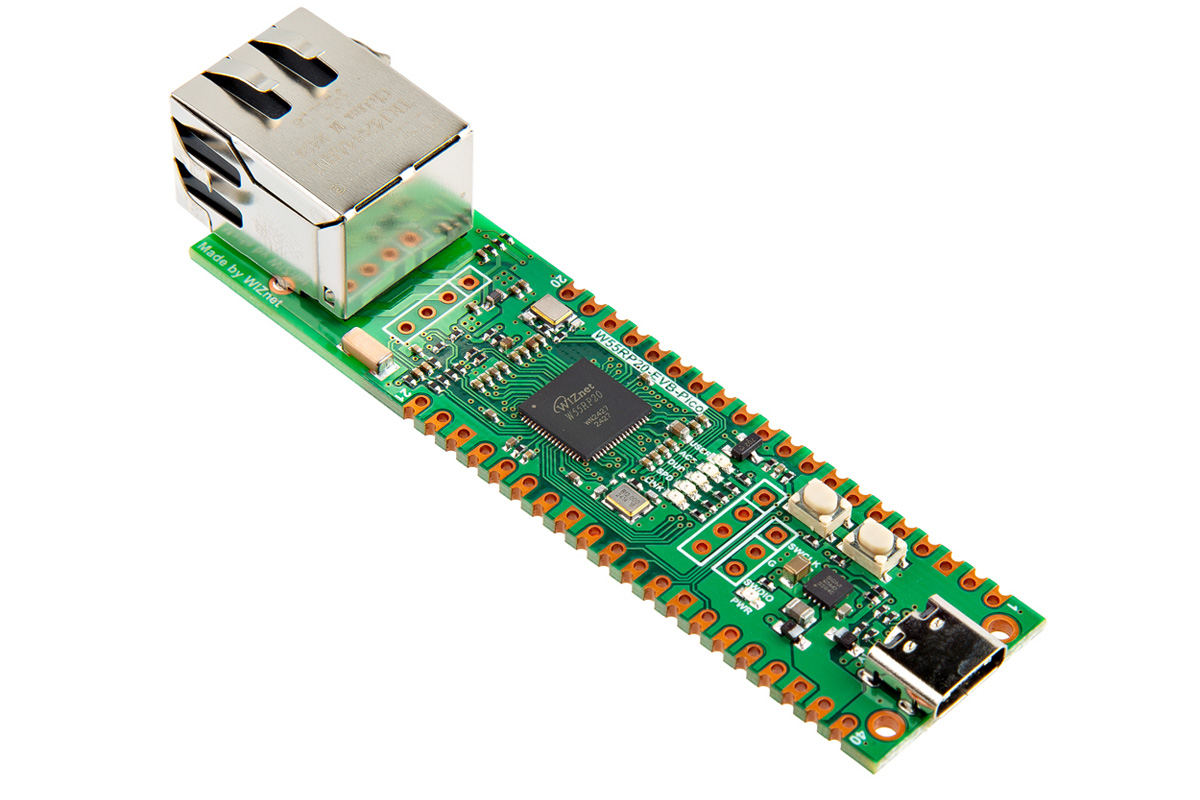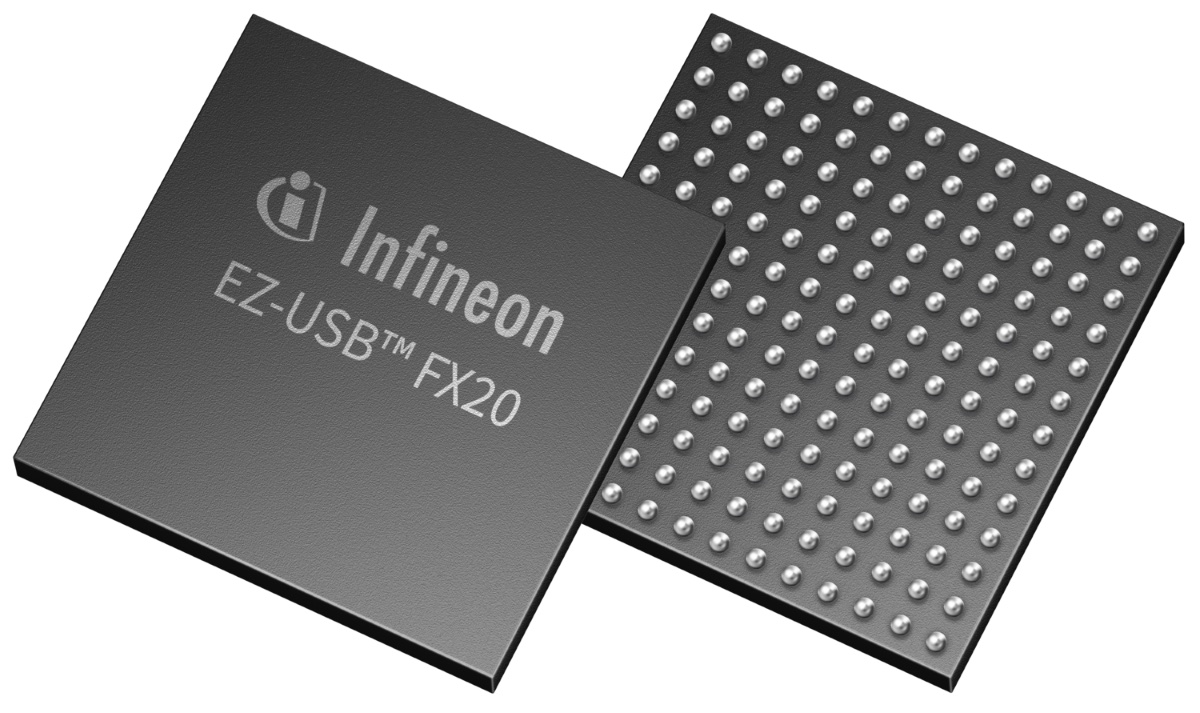The Renesas RX260 and RX261 two new 64 MHz microcontrollers part of the high-performance, high-efficiency RX product family with integrated capacitive touch-sensing and high power efficiency in both active and standby modes. The microcontrollers are based on the RXv3 core with a performance score of 355 CoreMark @ 64MHz, which is “2.5 times higher than competing 64 MHz class MCUs.” The chips are also power-efficient, with a consumption rate of 69μA/MHz during active operation and 1μA only in standby mode. According to Renesas, the chips are up to 25% more efficient in active mode and 87% more efficient in standby mode than other 64 MHz class MCUs. Another competing factor is the onboard 8KB of data flash, eliminating the need for external EEPROM. The RX260 and RX261 Group MCUs support noise- and water-resistant capacitive touch via Renesas’ third-generation capacitive touch IP (CTSU2SL). They also integrate an “automatic judgment function” that […]
Renesas CCE4511 IO-Link master IC and ZSSC3286 IO-Link sensor signal conditioner IC are designed for industrial sensors and actuators
Renesas has recently introduced the CCE4511 four-channel IO-Link master IC and the ZSSC3286 IO-Link-ready dual-channel sensor signal conditioner IC along with their development boards designed for harsh industrial environments. The CCE4511 master IC supports four channels with 500mA driving current, overvoltage detection, and overcurrent protection, Additionally, it has an integrated IO-Link Frame Handler that reduces microcontroller load. The ZSSC3286on is the first sensor signal conditioner with an integrated IO-Link compliant stack, meaning you don’t need a separate microcontroller for signal handling. Additionally, it features 24-bit ADCs and advanced diagnostic functions for advanced tasks. Both products are optimized for industrial automation, offering energy efficiency, smaller PCB sizes, and robust system diagnostics. CCE4511 IO-Link master and ZSSC3286 sensor signal conditioner IC Specifications CCE4511 IO-Link master Main Chip – CCE4511 4-Channel IO-Link Master PHY with integrated Frame Handler Number of Channels – 4 IO-Link master channels Frame Handler – Hardware frame handler for […]
Seeed Studio launches ESP32-C6-powered 60GHz mmWave human fall detection and breathing/heartbeat detection sensor kits
Last year, we reviewed the MR60FDA1 60GHz mmWave fall detection sensor kit, which utilizes the XIAO ESP32C3 module as its core. This module, featuring both Wi-Fi and Bluetooth connectivity, opens up various IoT applications. Now, Seeed Studio has introduced advanced mmWave sensor modules specifically designed for enhanced fall detection and heartbeat monitoring. The MR60FDA2 is optimized for fall detection, while the MR60BHA2 is designed for heartbeat monitoring. Powered by an ESP32-C6 WiFi 6 and RIS-Bluetotoh LE microcontroller, these modules offer reliable detection for real-time fall monitoring and accurate heartbeat tracking. They also feature customizable RGB LEDs and ambient light sensors, providing additional flexibility. With expansion options via Grove GPIO ports, these versatile modules are well-suited for applications like smart home integration and healthcare monitoring. Previously, we covered the RoomSense IQ and the DesignCore RS-6843AOPU with mmWave technology. The RoomSense IQ is an ESP32-S3-based modular room monitor with mmWave radar presence […]
Microchip PIC32MZ-W1 is a 32-bit MIPS WiFi MCU with 60+ GPIO, USB, CAN Bus, Ethernet, and more
Microchip recently released the PIC32MZ-W1 wireless MCU along with 20 other WiFi parts, including WiFi MCUs, link controllers, network controllers, and plug-and-play modules. Among them, the PIC32MZ-W1 wireless MCU is the most interesting because of its 32-bit MIPS microAptiv M-class core running at up to 200MHz, advanced hardware security features, and integrated Microchip Trust Platform for secure cloud authentication. Over the years ESP32 MCUs have become the go-to choice for wireless applications. Still, one problem we always have with ESP32 SoCs is their limited GPIO option due to their strapped-out pin structures. But this new MCU has over 60 GPIO pins to work with along with Ethernet MAC, USB, CAN Bus, CANFD, SPI, I2C, SQI, UART, ADC, JTAG, and more. PIC32MZ-W1 wireless MCU specifications MCU MIPS32 M-Class core clocked at 200 MHz 16KB I-Cache, 16KB D-Cache microMIPS mode (up to 35% smaller code size) DSP extensions (4x 64-bit accumulators, single-cycle […]
$6 Cocket Nova CH552 development board features CH552G 8-bit MCU with an enhanced 8051 core
The Cocket Nova CH552 is a cheap and versatile development board built around the CH552G MCU with an enhanced 8051 core clocked at 24MHz. Designed for beginners and hobbyists, this board features easy USB Type-C programming, onboard LEDs and a Neopixel RGB, reset and boot buttons, and Qwiic/STEMMA QT connectors for easy expansion. Additionally, it gives access to 17 GPIOs, PWM, ADC, and touch button capabilities. These features along with low-cost and standard breadboard compatibility make this development board suitable for learning and experimentation. We have previously written about other products built around the CH552G/T microcontroller, namely a $10 Arduino-programmable keyboard and the Turing Smart Screen 3.5-inch USB Type-C information display. Users interested in inexpensive 8-bit MCU boards may also check out Electrodragon’s CH551 mini development board based on another MCU part of the CH55x family. Cocket Nova CH552 development board specifications: MCU – WCH CH552 8-bit Enhanced USB single-chip MCU […]
Infineon XENSIV game controller features PSoC 6 MCU, magnetic sensors, and OPTIGA Trust M security
Infineon Technologies XENSIV game controller is a reference design that integrates XENSIV magnetic position sensors for precise joystick control without sensor drift and XENSIV Hall switch triggers for reliable operation. The controller also features capacitive CAPSENSE buttons, CAPSENSE presence detection, and a SPIDER+ rumble driver. These components work together with the PSoC 6 BLE microcontroller to create a low-power, plug-and-play solution. The onboard display allows users to monitor joystick movements, connection status, configurations, and battery information. The controller connects to PCs or smartphones as a USB human interface device (HID) without requiring manual configuration or driver installation. It also supports Bluetooth Low Energy and uses capacitive presence detection to optimize battery life. The design includes a PSoC 6 debugger and supports customizable shields providing flexibility for software and hardware integration. Previously, we covered an Arduino Nano Matter-powered game controller that successfully ported Quake, a popular first-person shooter game. We’ve also […]
Wiznet W55RP20-EVB-Pico board features W55RP20 SiP with W5500 Ethernet controller and RP2040 MCU
Wiznet has recently released the W55RP20-EVB-Pico dev board, a compact board based around the W55RP20 SiP that fuses the Raspberry Pi RP2040 MCU and the W5500 Ethernet controller into a single IC, plus a 2MB flash chip for firmware storage. Just last month we wrote about W5100S-EVB-Pico2 and W5500-EVB-Pico2 dev boards, both the boards have a newer Raspberry Pi RP2350 MCU and external Ethernet controller (W5500 or W5100S). The RP2350 offers additional security features such as One Time Programmable (OTP) memory, secure boot, and Arm TrustZone technology, making it more suitable for secure applications. The W55RP20 on the other hand integrates a W5500 Ethernet controller and the RP2040 in a single SiP which is also pin-compatible with the Raspberry Pi Pico, making it easy to use existing Pico accessories and code examples. W55RP20-EVB-Pico dev board specifications: SiP– W55RP20 microcontroller MCU – Raspberry Pi RP2040 Core– Dual Cortex M0+ cores up […]
Infineon EZ-USB FX20 programmable USB controller supports up to 20Gbps speeds, features LVDS interfaces
The EZ-USB FX20 is a programmable USB controller supporting speedy transfers via USB 20Gbps and LVDS interfaces. It is the latest addition to Infineon’s EZ-USB line designed to add USB connectivity to devices with high-performance requirements in AI, image processing, and other demanding applications. It offers up to six times the bandwidth of its predecessor, the EZ-USB FX3. The FX20 is powered by a dual-core MCU subsystem, with ARM Cortex-M4F and ARM Cortex-M0+ cores. It features 512KB flash, 128KB SRAM, 128KB ROM, and seven serial communication blocks (SCBs). The cryptography accelerator and high-bandwidth data subsystem enable Direct Memory Access (DMA) data transfers via the supported interfaces. The programmable USB controller includes 1MB of SRAM for USB data buffering. EZ-USB FX20 specifications: CPU – Dual-core, ARM Cortex-M4F core@ 150 MHz, ARM Cortex-M0+ core @ 100 MHz Memory – 512KB flash, 1024 + 128KB SRAM USB – USB 3.2 Gen 2 x2 […]



